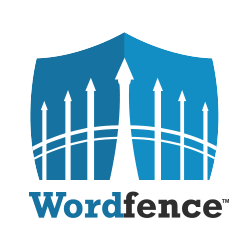Website breaking ways attackers-wordfence newsletter Must read now 2020 Update

Website breaking ways attackers-wordfence newsletter Must read now 2020 Update
One of the ways on attackers try to break in to your site is by guessing your username and password. They try to figure out valid usernames and then try lists of common passwords in hopes of successfully logging in. These “dictionary attacks” are a type of brute force login attack.
Wordfence includes a number of powerful brute force protection features that can be used to prevent malicious bots from gaining access to your site, including the integration with Troy Hunt’s version 2 of the Pwned Passwords API that prevents access using passwords previously seen in a breach.
Wordfence recommended settings for Wordpress
When you install Wordfence for the first time, ]the plugin defaults to recommended settings that are a perfect starting place for customization. You won’t need to do much else. However, Wordfence is highly configurable, allowing you to tailor how it works to meet your needs.
Factors to consider when modifying your site’s brute force protection settings include:
- How adept are your users? Do you have users that forget their passwords often? Are they logging in sporadically and have a high probability of losing their passwords? You’ll want to take them into consideration and allow room for user error.
- Is this a high traffic, high profile site that often experiences hacking attempts?
- Is your site under repeated attack from brute force attempts?
The default configuration Wordpress
Your first decision is how many failed login attempts to allow and over what time period to count failures. The default configuration allows up to 20 failures over a 4 hour period. If you have a lot of users, especially ones who are more prone to forgetting their passwords this may be perfect for your site. However, if you only have a small handful of users who are highly technical you might want to tighten these up. At the extreme, we have some customers who only allow 2 login failures over a 5 minute period.
Your next decision is how many times the “forgot password” form on your site can be used. This protects you against having your “Forgot password?” form used to flood a real user’s inbox with password reset emails, and prevents attackers from trying to guess user accounts on your system. The default value is 20. Setting this to 5 should be a safe choice for most sites and many site owners get even more aggressive.
Next you need to decide how long to lock a user (or attacking IP) out once they’ve exceeded one of your login failure thresholds. The default value is 4 hours. Many sites increase this value to a day. Sites with a more aggressive posture often set this to a month. The big downside to being overly aggressive with these settings is that you risk locking your users or yourself out of your site for an extended period of time. Consider what you’ll do in these situations when making these decisions.
Immediately locking out users (or IPs) that use an invalid username is another option. By default this option is turned off, as it significantly increases the chances that you or another admin will accidentally lock yourself out of your site. If you’re confident that you can avoid locking yourself out, or you have a backup plan should it happen, enabling this option can go a long way toward locking down your site.
If the previous option is too aggressive for your site, we also provide an option to lock out attackers who use a specific list of usernames. Most of the attacks we see attempt common usernames such as ‘admin’, ‘administrator’ and different strings based on your domain name. Coming up your own list based on predictable guesses can be very effective.
The next option to consider is to prevent the use of passwords leaked in a data breach. This is enabled by default, with “For admins only” selected. To lock your site down even tighter, consider changing this option to “For all users with publish posts capability”.
There is an important set of options in the “Additional Options” section for you to consider as well. We recommend that most site owners leave the default configuration in place. They are:
- Enforce strong passwords
- Don’t let WordPress reveal valid users in login errors
- Prevent users registering ‘admin’ username if it doesn’t exist
- Prevent discovery of usernames through ‘/?author=N’ scans, the oEmbed API, and the WordPress REST API
- Block IPs who send POST requests with a blank User-Agent and Referer
- Custom text show on block pages
- Check password strength on profile update
- Participate in the Real-Time Security Network
Finally, the Wordfence real-time IP blacklist does a great job of blocking IPs that are actively attacking WordPress sites. Consider upgraded to Premium to enable this powerful feature.
Regards,
Mark Maunder - Wordfence Founder & CEO
Mark Maunder - Wordfence Founder & CEO
This usefull article from Wordfence newsletter for To your attention
Labels:
malware





SEO in Dubai, we are SEO Consultants in Dubai to improve your website rankings on google, we are top SEO agency in Dubai.
பதிலளிநீக்குTop SEO Comapny in Dubai. We provide Our Clients quality SEO Services in Dubai that will allow you to engage and compete with the competitors in Dubai Our SEO Services in Dubai to make them noticeable on the head of web crawler records. Our SEO procedures make you obvious to your focused on crowd which will give your business a prevailing spot in market.
Wordfence wordpress plugin protect your website against brute force attacks, which occur when an attacker utilizes a technique that involves trial and error to figure out passwords or decode encrypted data.
பதிலளிநீக்கு